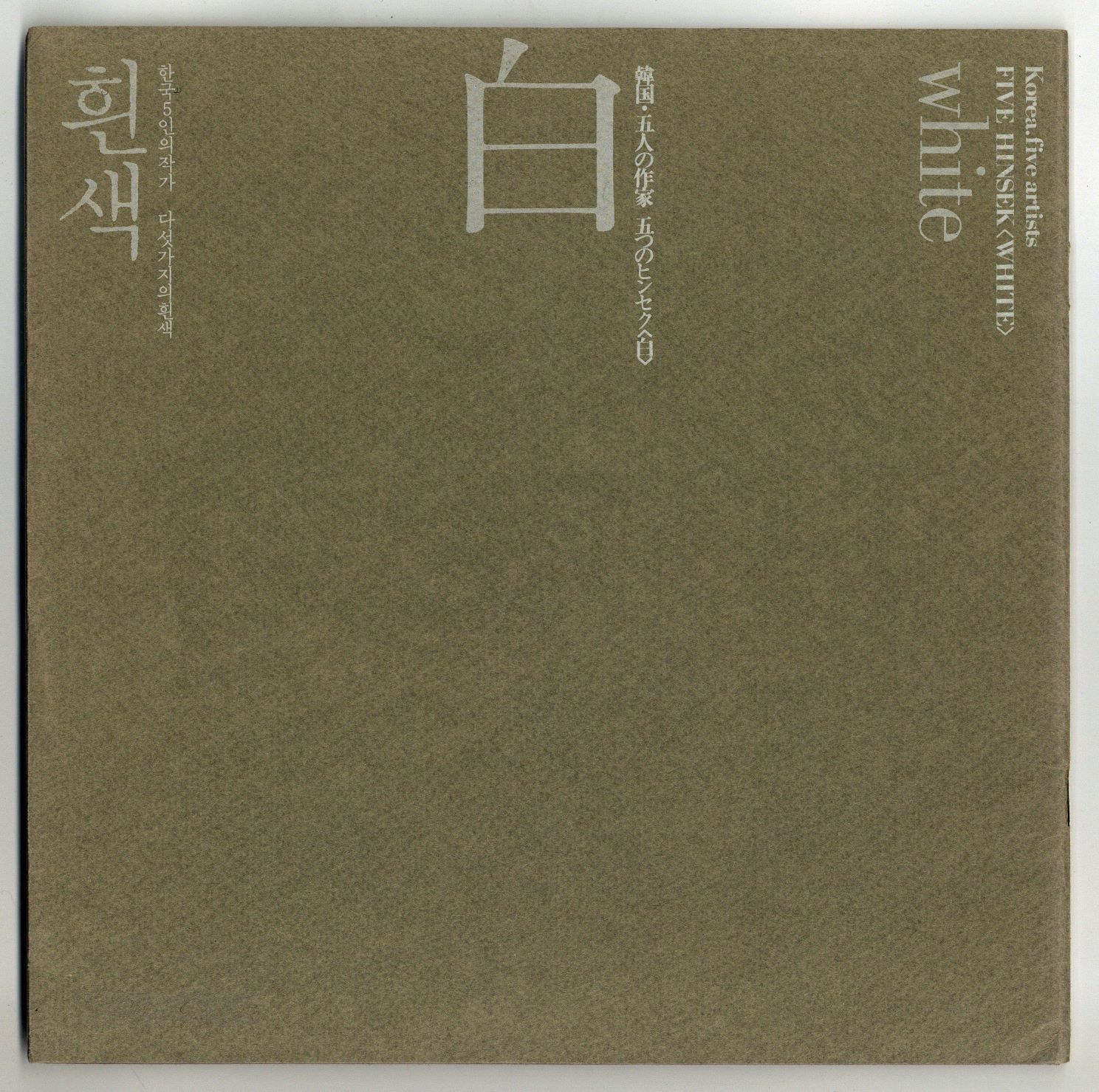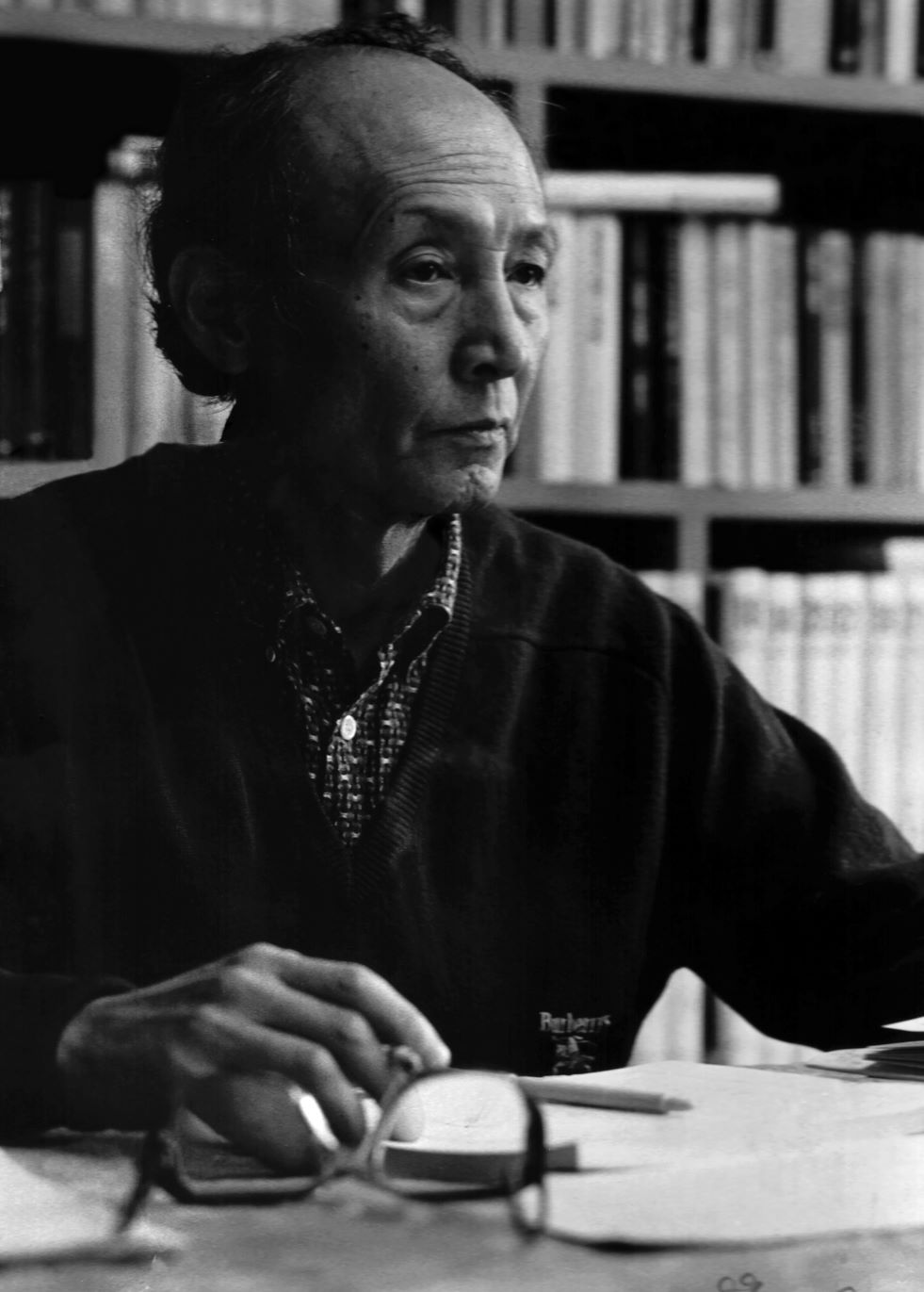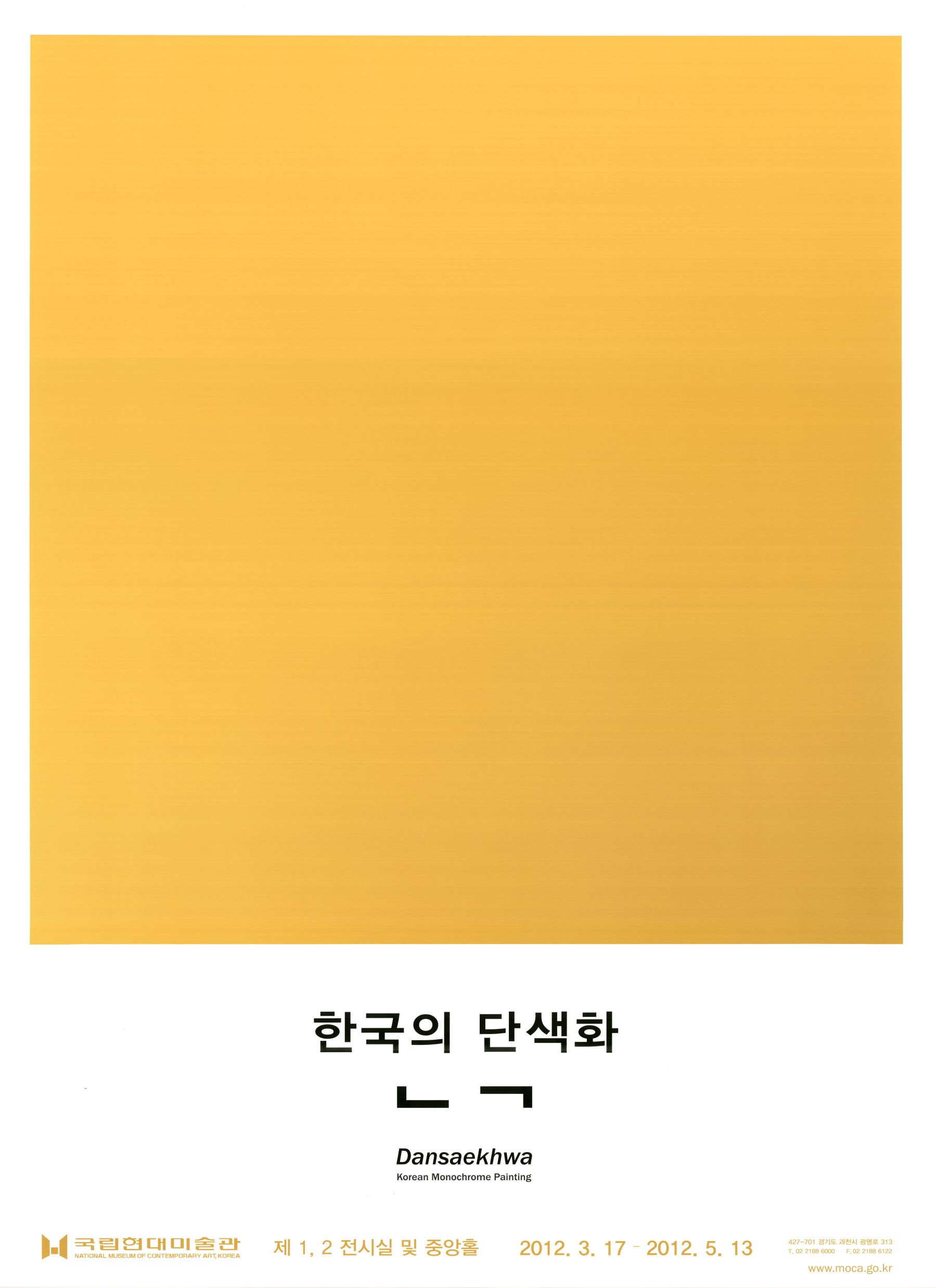
Korea: Five Artists, Five Hinsek—White, Brochure, 1975, MMCA Art Research Center Collection Tokyo Gallery Collection, Gift of Tokyo Gallery
Korea: Five Artists, Five Hinsek—White
* Source: Multilingual Glossary of Korean Art. Korea Arts Management Service
Related
-

Lee Yil
Lee Yil(1932-1997) was a first-generation critic whose art criticism was based on art theories and greatly impacted the formation of Korean modernism. He was born in Gangseo, Pyeongannam-do Province and his real name is Lee Jinsik. While attending Pyongyang High School, Lee defected to South Korea and went to Gyeongbok High School in Seoul. After graduation, he entered the French Literature Department at Seoul National University but dropped out and moved to Paris. In 1961, he studied archaeology and art history at Sorbonne University. There, he worked as a Paris correspondent for the Chosun Ilbo newspaper. In 1964, he translated and published L’aventure de l’art abstrait (The Adventure of Abstract Art) by Michel Ragon. Returning to Korea in 1965, Lee began practicing art criticism in earnest. In 1966, he joined Hongik University as a professor of art theory, and he held the position for thirty years until his retirement in 1997. He wrote A Trajectory of Contemporary Art that introduced contemporary art of the West in 1974. Among his translated works are Naissance d’un Art Nouveau (Birth of Art Nouveau) (1974) by Michel Ragon, The History of World Painting (1974), and History of Art by H.W. Janson (1984). From the 1980s, he published books on art criticism, including Korean Art: The Face of Today (1982) and Reduction and Expansion of Contemporary Art (1991). After his death, the collections of his posthumous manuscripts, Lee Yil: Art Criticism Journal (1998) and The Critic Lee Yil Anthology in two volumes (2013), were published. Lee Yil’s art criticism activities can be divided largely into two periods. The former period spans from the time he returned from France to the early 1970s. During this period, Lee was interested in anti-art such as Dadaism and Nouveau Réalisme (New Realism). He inspired the formation of the Union Exhibition of Korean Young Artists that was brought together in solidarity by the generation who experienced the April 19 Revolution. Serving as a founding member and theorist of the Korean Avant Garde Association (referred to as AG) established in 1969, he developed criticism that laid the foundation for the formation of avant-garde art that emphasized experimentation. Around 1971 and 1972, he redirected his attention to art reflecting Korean culture and the spirit of Koreans rather than avant-garde focused on resistance. In the latter period, he stressed a “return to the primordial.” With his distinctive critical concepts, such as “reduction and expansion” and “pan-naturalism,” he actively supported the Korean Minimalism school of painters, especially Dansaekhwa artists. Lee’s critical perspective became a cornerstone in the narrative of Korean contemporary art history in the 1970s.
-

Park Seo-Bo
Park Seo-Bo(1931-2023, real name Park Jaehong) belongs to the first generation of artists who received art education in Korea after Korea’s liberation from Japan. He was a leading figure in Art Informel and Dansaekhwa. He was born in Yecheon, Gyeongsangbuk-do Province. He majored in Western painting in the College of Fine arts at Hongik University and graduated in 1955. He served as a professor at Hongik University and the board president of the Korean Fine Arts Association (Hanguk misul hyeophoe). Park made his debut as a painter in 1956 through the Four Artists Exhibition that declared resistance to the National Art Exhibition and the established generation. After presenting abstract expressionist work completely different from the established art at the third Hyundae Fine Artists Association exhibition in 1958, he led the Art Informel movement until the mid-1960s. In the 1970s, he headed large-scale special exhibitions, including Independants, the Seoul Contemporary Art Festival, Ecole de Séoul, and Korea: Facet of Contemporary Art. He also played a key role in establishing “Dansaekhwa” as a style of Korean painting in the 1970s. His oeuvre can be divided into three periods. The first period (late 1950s–mid 1960s) is referred to as the Art Informel period, during which Park depicted the post-war situation with distorted and deconstructed human forms, dark colors, and rough matière, particularly in the Primordials series. During the second period (late 1960s–early 1970s), he focused on the modernization of tradition, presenting optical and geometric abstraction with five colors representing the five cardinal directions as the dominant compositional element under the thesis of hereditarus. During the third period (1970s–2023), which is known as the period of monochrome painting, he presented the Ecriture series, in which performance was fundamental to his creation. The Ecriture series can be divided into two periods: before and after year 1982. In the former period, Park repeatedly applied milky oil paint to a canvas and before it dried, drew lines with a pencil or a tool with a sharp tip, thus leaving traces of this act on the canvas. In the latter period, he used water-based paints instead of oil-based paints in an effort to more directly capture his emotions with bright hues inspired by the colors of nature. Until his death, he sought to build the identity of Korean art through various methodologies within a single thesis of ecriture and elevated Dansaekhwa to an international level.
-

Korea: Facet of Contemporary Art
Korea: Facet of Contemporary Art was an exhibition held at the Tokyo Central Art Museum in Japan from August 16 through August 28 in 1977. The Japanese art critics Nakahara Yūsuke and Komura Masataka, and Yamamoto Takashi, president of the Tokyo Gallery, personally traveled to South Korea and selected participating artists and the works for the exhibition. Each of the selected artists submitted three to ten works. They included Quac Insik, Kwon Youngwoo, Kim Kulim, Kim Guiline, Kim Yong-Ik, Kim Jinsuk, Kim Tschang-yeul, Park Seo-Bo, Park Jangnyun, Suh Seungwon, Shim Moon-seup, Yun Hyongkeun, Lee Kangso, Lee Dongyoub, Lee Sangnam, Lee Seungjio, Lee Ufan, Chin Ohcsun, and Choi Byungso. The exhibition catalogue contained a preface by Nakahara Yūsuke and plates of works that the nineteen artists produced between 1976 and 1977. Korea: Facet of Contemporary Art was the largest exhibition on contemporary Korean art to be held in Japan since the Contemporary Korean Painting in 1968 at The National Museum of Western Art in Tokyo. Nakahara Yūsuke viewed that the works included in the exhibition are all based on black and white and that this common feature is not “anti-colorism” but each artist’s painterly interest in the unification of the background and “what is drawn,” the things other than colors, and their visualization of it in their own way. Following the exhibition Korea: Five Artists, Five Hinsek “White” held at the Tokyo Gallery in 1975, this exhibition enabled artists, who had worked in monotone painting, to participate in an international-scale exhibition as a group, contributing to shaping the perception that they represented Korean contemporary art.







